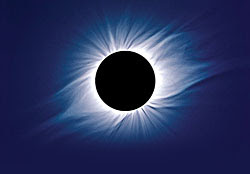Lunar Occultation of Antares Tonight!

An interesting celestial event is within easy reach of a pair of binoculars or a small telescope, on the night of the 31st of July, from all over the country. The occultation of Antares by Moon occurs around 9:55 P.M. in Kathmandu while 9:52 P.M. in Bhairahawa,9:54 P.M.in Biratnagar,9:55 P.M. in Chandragadi,9: 53 P.M. in Janakpur, ,9:52 P.M. in Nepalganj and 9:53 P.M. in Simara. A Lunar occultation could be the passing of the Moon in front of any other distant celestial Object - a Planet, other Solar System objects, a distant Star, or a deep sky object. Of these, the passage of the Moon in front of the naked eye Planets or bright stars, is an event that is most accessible to people without any observing equipment.And tonight is the time for the bright star occultaion by Moon. The Star being occulted, is Jyestha or Antares - the brightest star in Scorpio. It glows with a reddish hue that gave it the name of Antares - or a rival to Mars or Aries. Moon has this tendency to repeat its occu...







